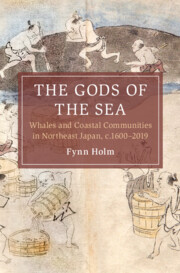Japanese names are given with the surname first, followed by the personal name. Following conventions in the field, after the first appearance I use the personal or artistic name for individuals who lived in the early modern period (1600–1867). For example, Ōtsuki Heisen is later referred to in the text as Heisen. For individuals living in the modern period (1867–present), however, I continue to use their last names after the first appearance, for example, Kishinouye Kamakichi is referred to as Kishinouye.
The value of monetary units varied greatly over the course of the early modern period. I use the following measurements:
1 ryō (gold coin) = ca. 60 monme (silver coins) = ca. 4,000 mon (copper coins)
1 kanme (measurement unit of 3.75 kg silver) = ca. 1,000 monme (silver coins)
1 koku (180 l of rice or 5 bushels, amount of rice that can supposedly feed one adult for one year and is worth around 1 ryō)
1 ri = ca. 3.9 km

